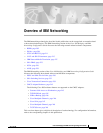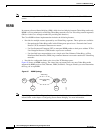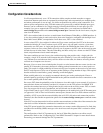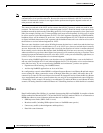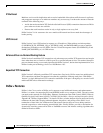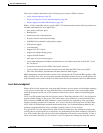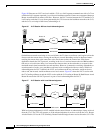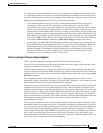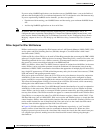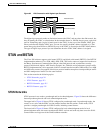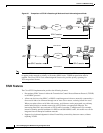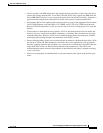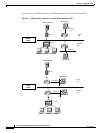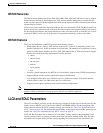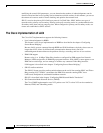
Overview of IBM Networking
DLSw+
BC-204
Cisco IOS Bridging and IBM Networking Configuration Guide
78-11737-02
Note As previously stated, local acknowledgment for LLC2 is meant only for extreme cases in which
communication is not possible otherwise. Because the router must maintain a full LLC2 session, the
number of simultaneous sessions it can support before performance degrades depends on the mix of
other protocols and their loads.
The routers at each end of the LLC2 session execute the full LLC2 protocol, which can result in some
overhead. The decision to turn on local acknowledgment for LLC2 should be based on the speed of the
backbone network in relation to the Token Ring speed. For LAN segments separated by slow-speed serial
links (for example, 56 kbps), the T1 timer problem could occur more frequently. In such cases, it might
be wise to turn on local acknowledgment for LLC2. For LAN segments separated by a FDDI backbone,
backbone delays will be minimal; in such cases, local acknowledgment for LLC2 should not be turned
on. Speed mismatch between the LAN segments and the backbone network is one criterion to be used in
the decision to use local acknowledgment for LLC2.
There are some situations (such as host B failing between the time host A sends data and the time host
B receives it) in which host A would behave as if, at the LLC2 layer, data was received when it actually
was not, because the device acknowledges that it received data from host A before it confirms that host
B can actually receive the data. But because both NetBIOS and SNA have error recovery in situations
where an end device goes down, these higher-level protocols will resend any missing or lost data. These
transaction request/confirmation protocols exist above LLC2, so they are not affected by tight timers, as
is LLC2. They also are transparent to local acknowledgment.
If you are using NetBIOS applications, note that there are two NetBIOS timers—one at the link level
and one at the next higher level. Local acknowledgment for LLC2 is designed to solve session timeouts
at the link level only. If you are experiencing NetBIOS session timeouts, you have two options:
• Experiment with increasing your NetBIOS timers.
• Avoid using NetBIOS applications on slow serial lines.
In a configuration scenario where RSRB is configured between Router A and Router B and both routers
are not routing IP, a Host connected to router A through Token Ring (or other LAN media) has no IP
connectivity to router B. This restriction exists because IP datagrams received from the Host by Router
A are encapsulated and sent to router B where they can only be de-encapsulated and source-bridged to
a Token Ring. In this scenario, IP routing is recommended. To enable the Host to reach Router B in this
scenario, IP routing should be enabled on Router A’s Token Ring interface to which the Host is attached.
DLSw+
Data-Link Switching Plus (DLSw+) is a method of transporting SNA and NetBIOS. It complies with the
DLSw standard documented in RFC 1795 and the DLSw Version 2 standard. DLSw+ is an alternative to
RSRB that addresses several inherent problems that exist in RSRB, such as:
• SRB hop-count limits (SRB’s limit is seven)
• Broadcast traffic (including SRB explorer frames or NetBIOS name queries)
• Unnecessary traffic (acknowledgments and keepalives)
• Data-link control timeouts



